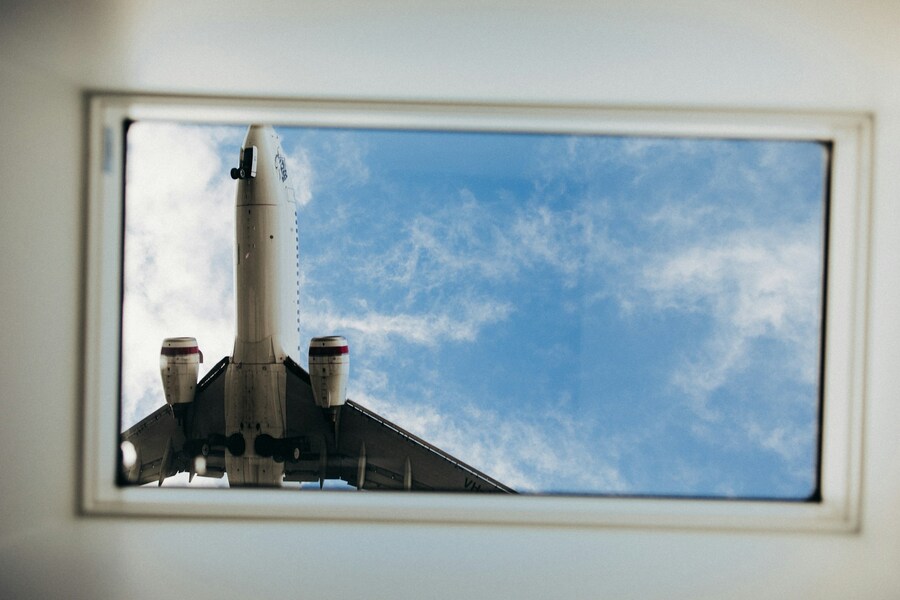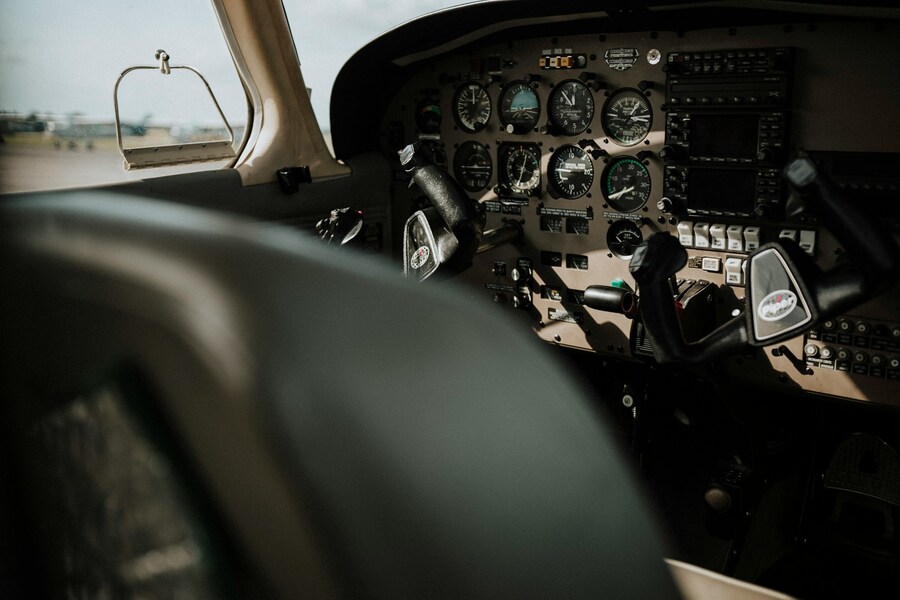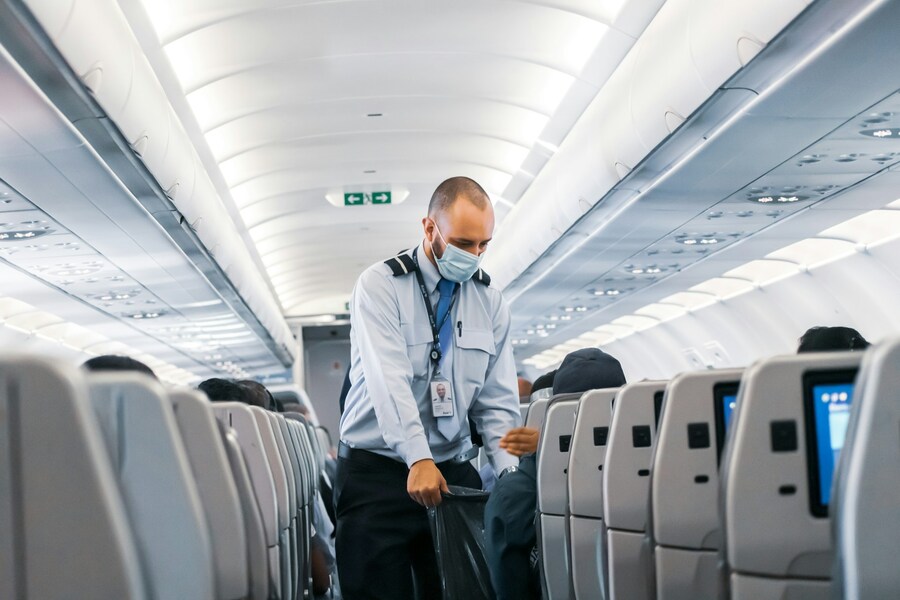When traveling by air, have you ever wondered about the type of airplane you're on? For example, is it a Boeing 737 or a Boeing 757? Even though modern planes may look similar, there are ways to tell them apart. If you're interested in learning about the differences between airplane models, this simple travel guide will help you identify them. Let's dive in!
Plane truth: what's flying you there?

Source: Josh Withers/Unsplash
How to identify the airplane type when booking?
Many travelers choose flights based on price and convenience. But some experienced travelers may want to fly on a specific plane model. They might prefer a more comfortable seating layout or a more modern design that can help reduce jet lag. With the recent news about the Boeing 737 MAX, you might also wonder if you can avoid flying on a certain plane type.
Luckily, major US airlines make it easy to see what type of aircraft is scheduled for each flight. However, aircraft assignments can change, and airlines usually won't let you change or refund your flight if that happens. That's why having a flexible and convenient off-site airport parking option like ParkingNearAirports.io can be a huge advantage for travelers! Just book your parking spot in advance, ensuring a smooth start to your trip regardless of any last-minute aircraft changes. Plus, take advantage of our special airport parking coupons and airport parking deals to save even more on your parking. Enjoy!
When booking with United Airlines, you'll see the aircraft type next to the flight number, right under the departure and arrival times. American Airlines also displays the aircraft type under the flight times, next to the flight number. On Delta Air Lines, you'll need to click on the "details" link or the flight numbers to see more detailed aircraft information, including a helpful illustration.
The big 3 US airlines operate many different plane types. But the low-cost airline Southwest has only flown the Boeing 737 since its first flight in 1971. However, Southwest uses a few different 737 models, including the older 737-700 and 737-800, as well as the newer 737-8 MAX. You can see this information when you click on the flight number during the booking process.
Common narrow-body plane models
Narrow-body planes have just 1 main aisle down the middle, with 2 to 3 seats on each side in the main cabin. Wide-body planes, on the other hand, have 2 aisles – one set of seats along each window and another row in the center between the aisles. If you're taking a domestic flight soon, you'll most likely be on an Airbus A320 or a Boeing 737.
Boeing airplane models
The Boeing 737 is the most popular aircraft in history. Since its first flight in 1967, over 15,000 of these planes have been built. Today, more than 11,000 Boeing 737s are still in service, and on average, 2 of them are landing or taking off every 5 seconds around the world.
Most older models of the Boeing 737, such as the 737-100, 737-200, 737-300, 737-400, and 737-500, are no longer used in the United States. The most common version in use now is the "Next Generation" 737, which was introduced in 1997 with upgraded technology. These include the 737-700, 737-800, and 737-900ER (Extended Range) models. In 2017, Boeing released another updated version called the 737 MAX, with further technological and efficiency improvements. As of mid-2024, the 737-8 and 737-9 models are flying, while the 737-7 and 737-10 are still waiting to be certified.
Many major US airlines, such as American, Delta, and United, operate hundreds of Boeing 737 aircraft. Southwest and Alaska Airlines use 737s for their entire mainline fleets (in addition to some regional jets for Alaska). As of mid-2024, Alaska, American, Southwest, and United also have dozens of 737 MAX planes in service.
As for other Boeing models, the Boeing 757, first flown in the 1980s, was once a common domestic plane, but many have been retired in recent years. However, United and Delta still have large fleets of these aircraft, which typically seat between 180 and 230 passengers and are the longest narrow-body planes currently flying. The smallest Boeing jet, the 110-seat Boeing 717, is also still in use with Delta and Hawaiian Airlines.

Source: Jose Lebron/Unsplash
Airbus airplane models
The Airbus A320 family has become extremely popular. Airbus introduced this type of aircraft in 1987, which was the first modern passenger plane with a computer-controlled cockpit. Today, more than 10,000 Airbus A320 family planes are still in use, including the A318, A319, A320, and A321 models (listed from smallest to largest).
Airbus has 2 versions of the A320 – the original "CEO" (current engine option) and the newer "NEO" (new engine option), which first flew in 2014 with more fuel-efficient engines and other design improvements. You can find Airbus models being used by many major airlines. Some US airlines like Frontier, JetBlue, and Spirit, as well as Allegiant, only operate Airbus A320 family planes. Other major US airlines like American, United, and Delta also have large fleets of these aircraft.
Another newer Airbus model is the A220, which was previously called the CS100. This plane was introduced in 2013, and airlines like Air Canada, Delta, and JetBlue are major operators of this model.
Regional jet airplanes
You may also find yourself on a smaller regional jet. These aircraft are usually a bit different from the larger mainline jets like the Boeing 737. Regional jets typically carry between 50 and 100 passengers and operate in and out of smaller airports under a different brand name like Delta Connection or United Express.
The 2 biggest companies that make these regional jets are Bombardier and Embraer. Bombardier produces the Canadair Regional Jet series, including models like the CRJ-200, CRJ-700, and CRJ-900. Embraer makes the E-jet family, which includes the E-170, E-175, E-190, and E-195. Embraer also makes the smaller ERJ-145 regional jet.
Wide-body aircraft
If you're taking a long international flight, you'll probably be on a wide-body jet. The Boeing wide-body planes used today include the huge double-decker Boeing 747, as well as the 767, 777, and 787 models. The 787 is Boeing's newest wide-body, made mostly with lighter composite materials that make it more fuel-efficient.
Airbus also has several large wide-body planes in use like the A330, A340, A350, and A380. The A330 and A340 have similar bodies, but the A340 has 4 engines instead of 2. The A350 is Airbus's newest long-range model, built to compete with Boeing 787, and comes in the A350-900 and larger A350-1000 versions. The A380 is the world's biggest passenger jet, which can hold 500 to 800 people across 2 full decks. Unfortunately, production of the A380 stopped in 2021 since not enough airlines wanted to buy it.

Source: Lukas Souza/Unsplash
Passenger experiences on different planes
Not all airplanes are exactly the same when it comes to passenger comfort. For example, the Airbus A320's cabin is about 7 inches wider than the Boeing 737's. This extra width gives each economy-class seat an inch more space, which makes a noticeable difference in the otherwise cramped cabins.
When it comes to regional jets, many passengers prefer Embraer's E-jets like the E175 because the cabin is slightly taller than the Canadair Regional Jet like the CRJ-900. This extra head room and larger overhead bins are appreciated by passengers. Both regional jets have 2-by-2 seating, so there's no middle seat in economy.
The newest wide-body models like the Airbus A350 and Boeing 787 also offer improved passenger comfort. They use carbon fiber materials in their construction, which increases the cabin pressure and reduces humidity. This can help ease the effects of jet lag compared to older airplane models. The 787 also has extra-large dimmable windows, which is a nice passenger-friendly feature. The A350 is slightly wider than the 787, allowing for slightly wider seats.
How to recognize aircraft by sight?
Ready to take your aviation knowledge to the next level? Skilled enthusiasts can identify the exact aircraft model just by looking at one at the airport runway. There are a few key details and small differences in each plane's design that you can watch for.
Start by checking the number of engines. Most aircraft these days have 2 engines, so if you see one with 4 engines, it'll be easier to figure out what it is. Even more obvious are the 2 large aircraft types with a double-decker design – the Boeing 747 and the Airbus A380 jumbo jet. The 747's upper deck only goes for a small part at the front, while the A380's upper deck runs the full length.
Other things to look for on the outside include the shape of the tail, the nose, the cockpit windows, the landing gear, and the number and type of doors along the side of the plane.
For instance, the Boeing 737 has a pointier nose than the rounded one on the Airbus A320. The 737's cockpit windows slant up and down at the bottom, while the A320's are mostly flat. The 737's tail has a noticeable triangle shape at the bottom where it meets the body, while the A320's has a small, gentle curve. Finally, the Airbus model sits higher off the ground than the Boeing.
When it comes to different variants of the same aircraft family, there can be some key differences. One important aspect is the exit doors. Since the variants have different passenger capacities, they often have a different number of exits. For instance, the 737-700 has just one small emergency exit window on each side over the wings. The 737-800, which is a bit larger, has 2 emergency exits over the wings. And the 737-900, being the longest, has 2 small emergency exits over the wings and a larger door right behind the wings that can be closed off if the airline chooses to have fewer seats.
The 737-9 MAX also has the option for that larger exit door right behind the wing, similar to the 737-900ER. These extra doors can be deactivated depending on the airline's seating configuration. In fact, this plugged exit door made headlines in January 2024 when it came loose from an Alaska Airlines 737-9 MAX shortly after takeoff, leading to the entire fleet being grounded and inspected before it could safely return to service a few weeks later.






